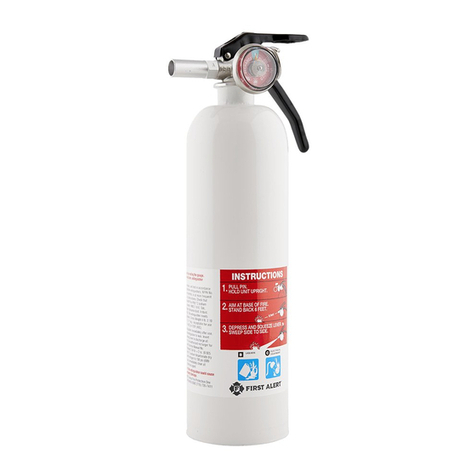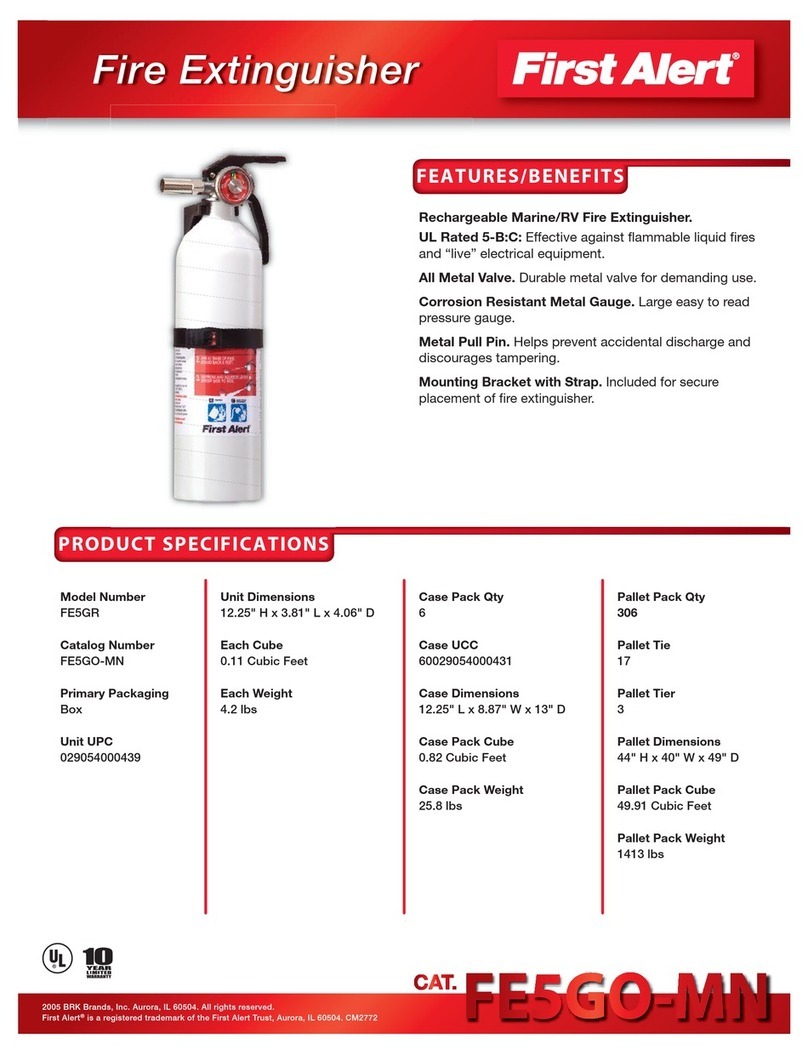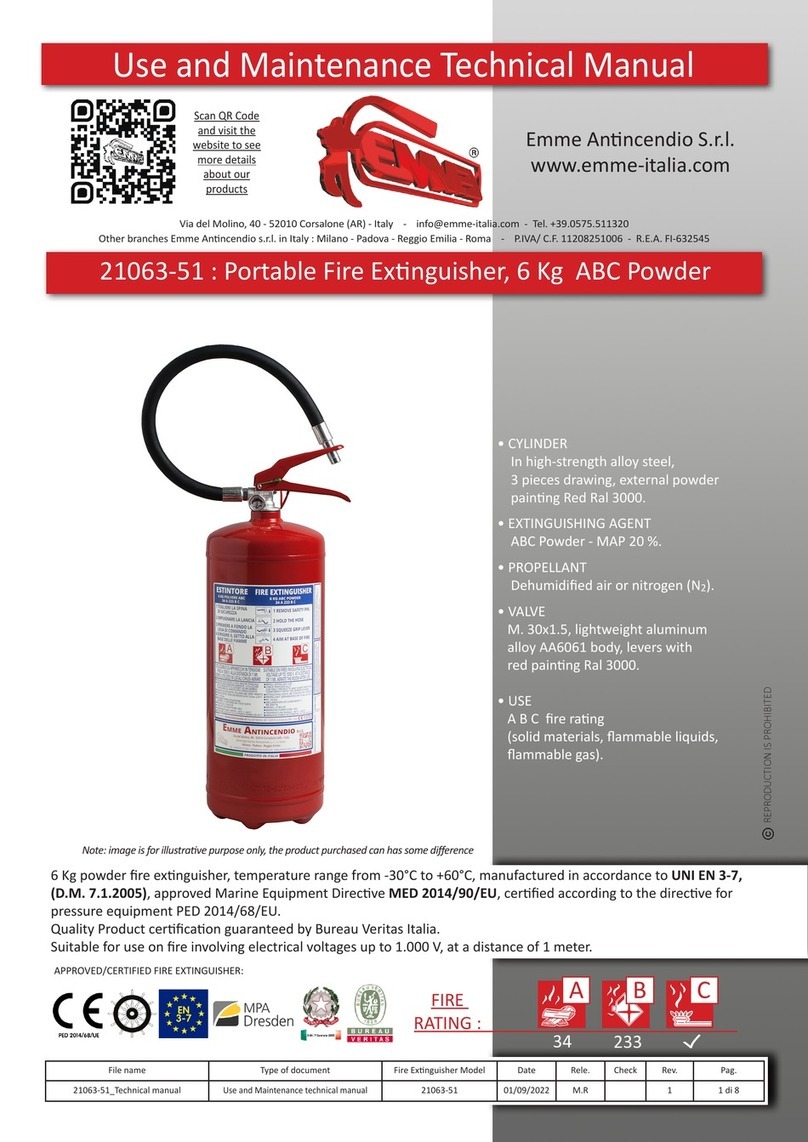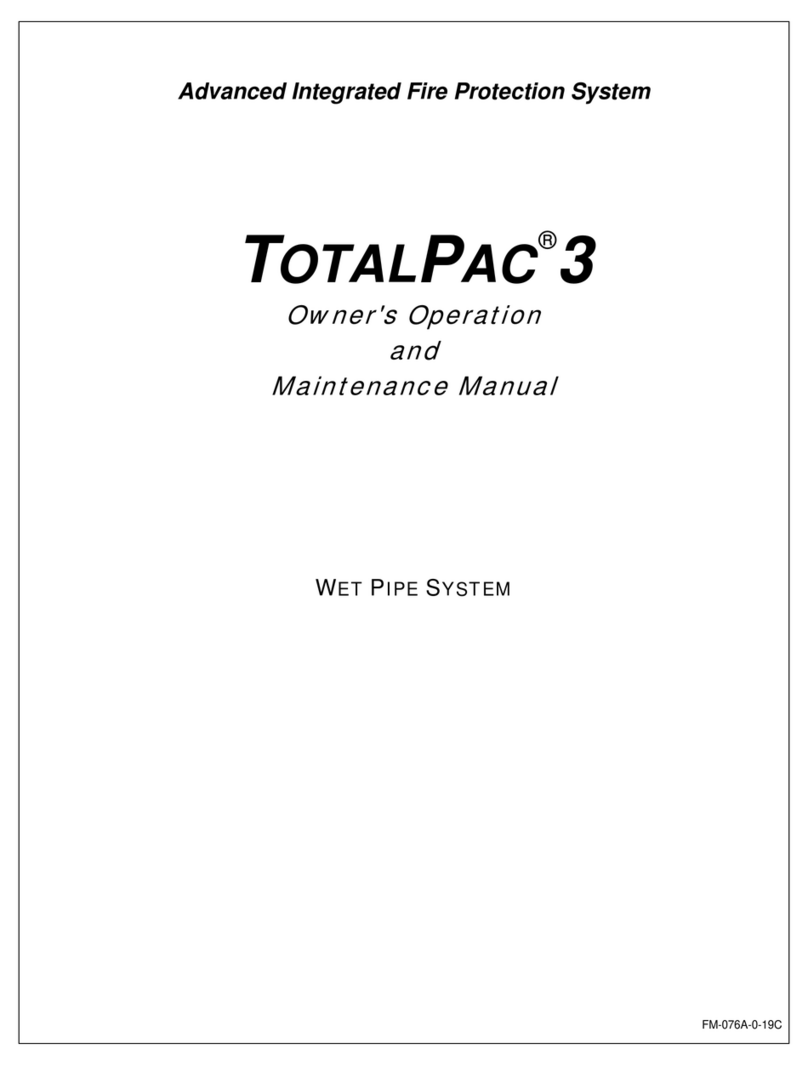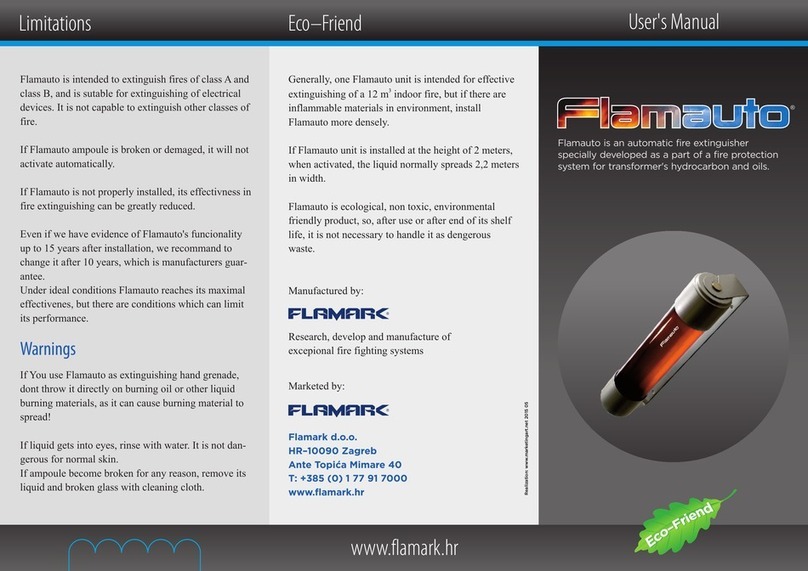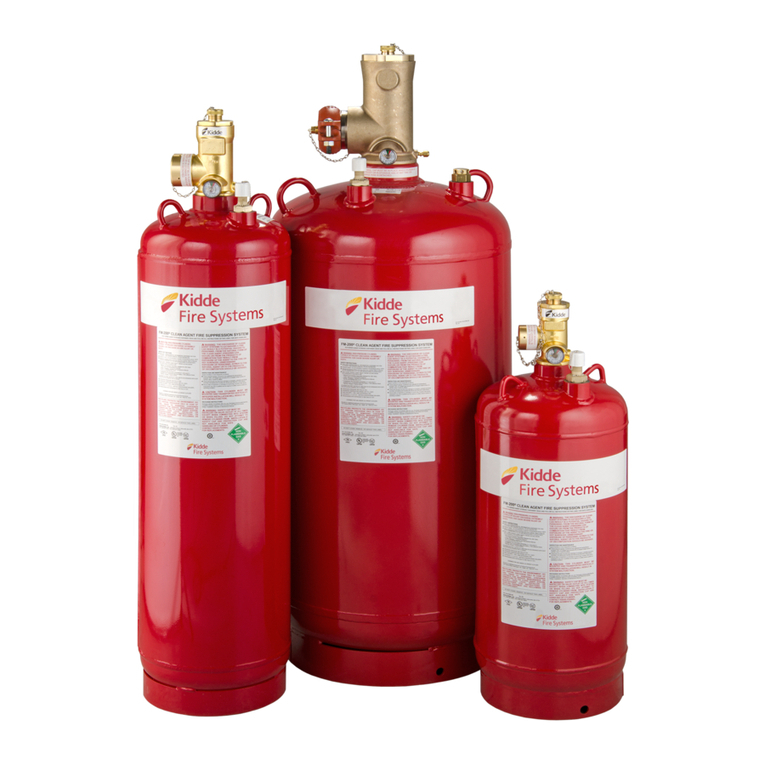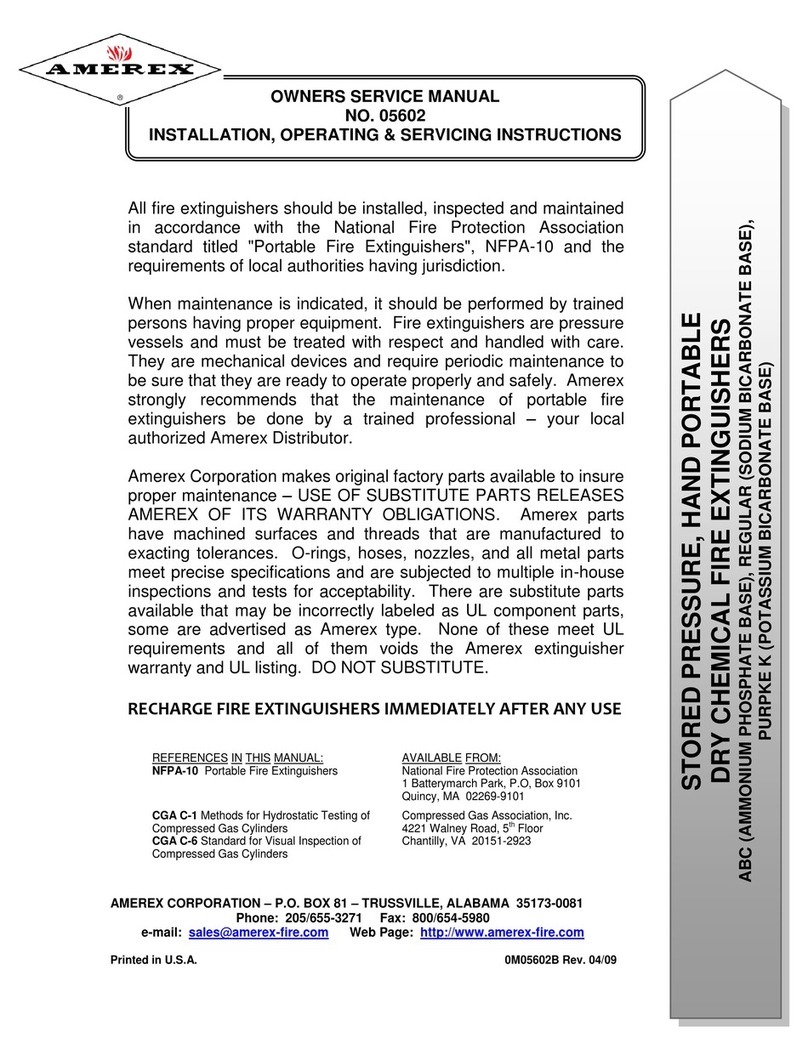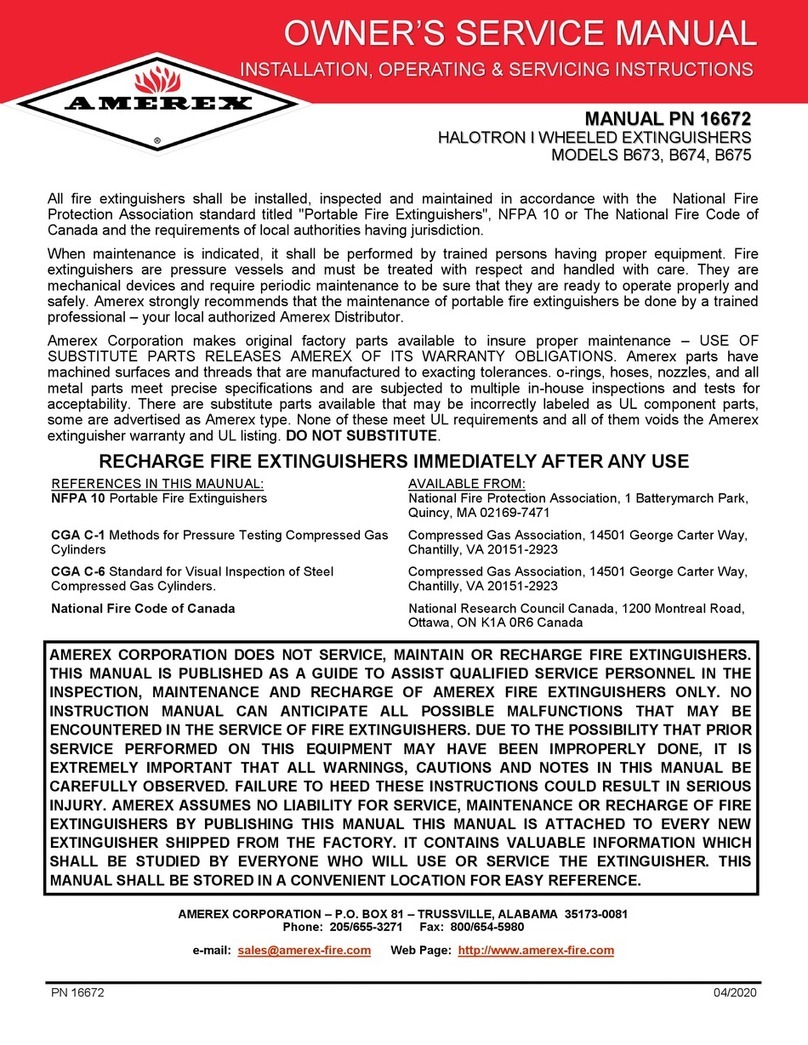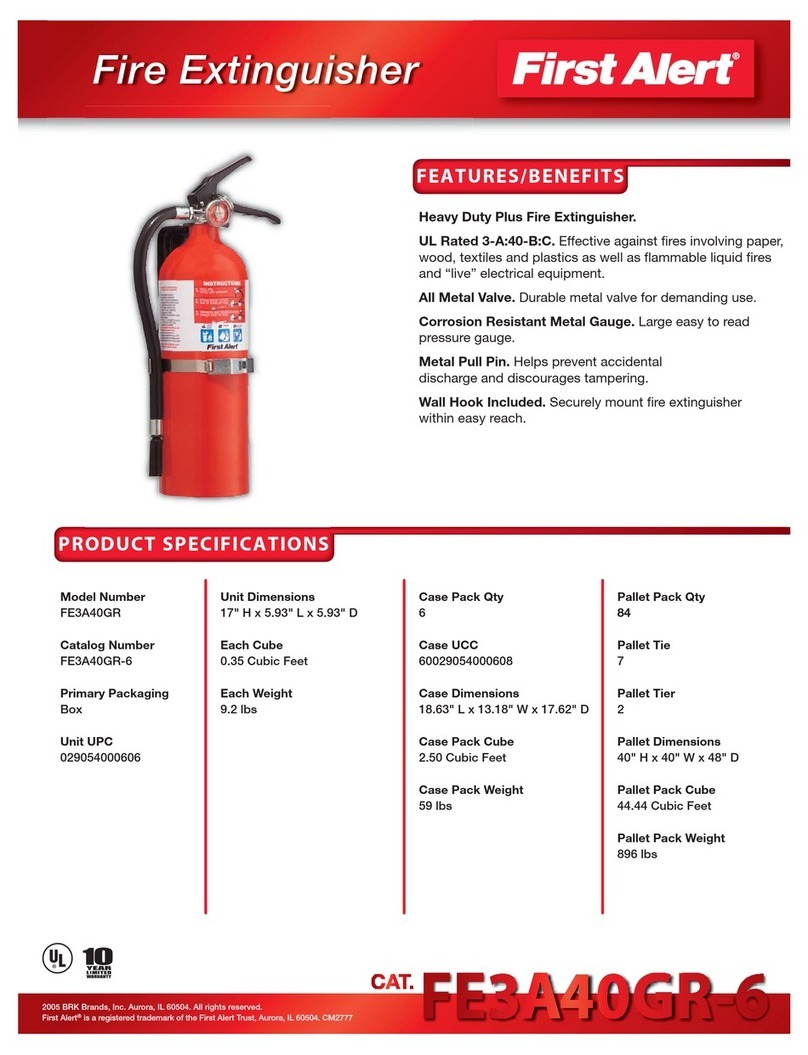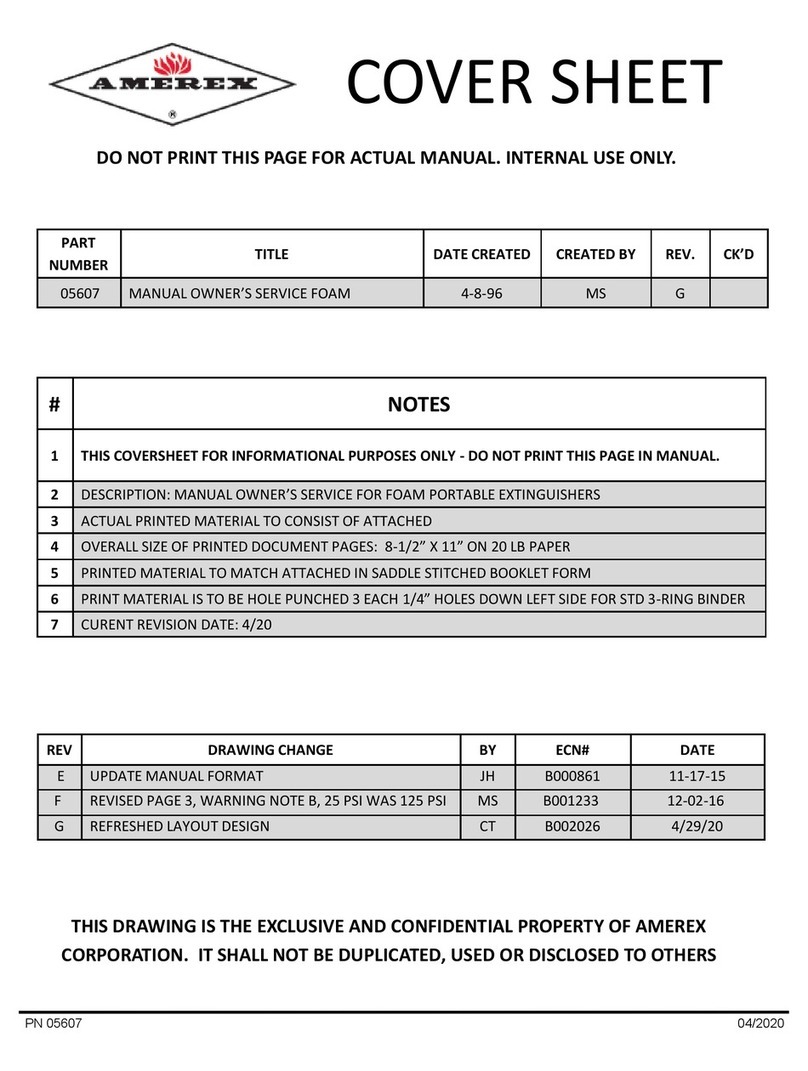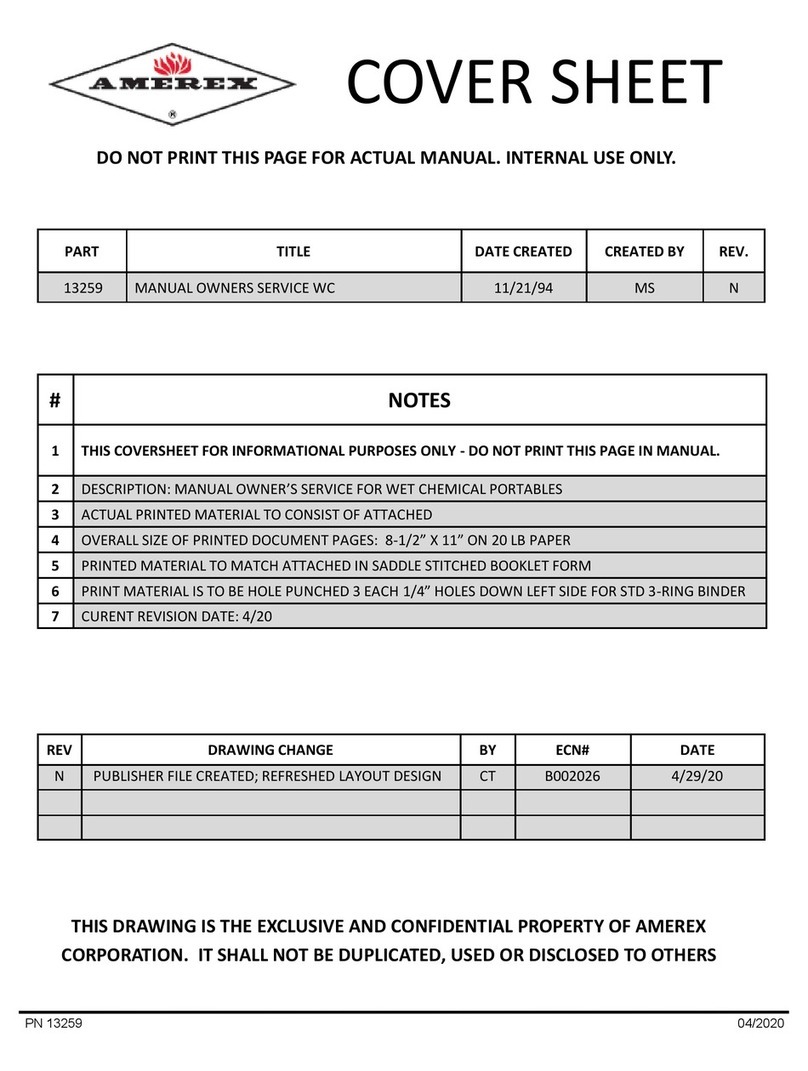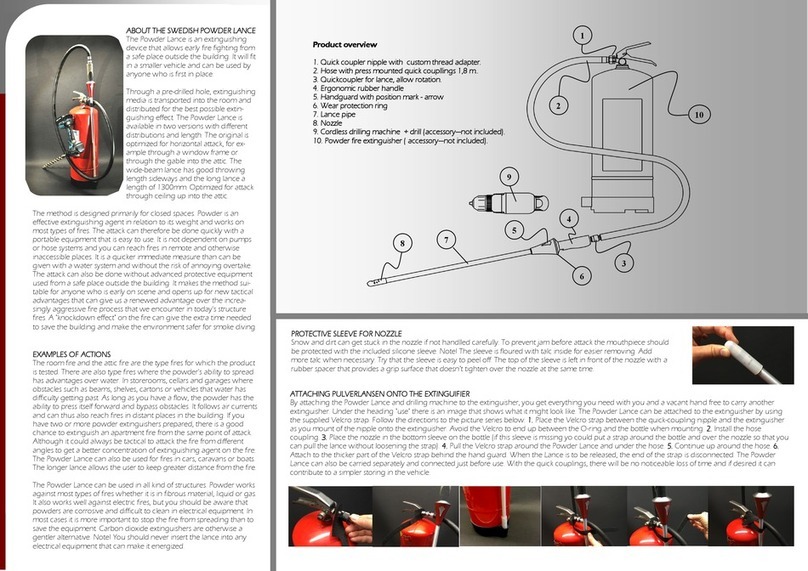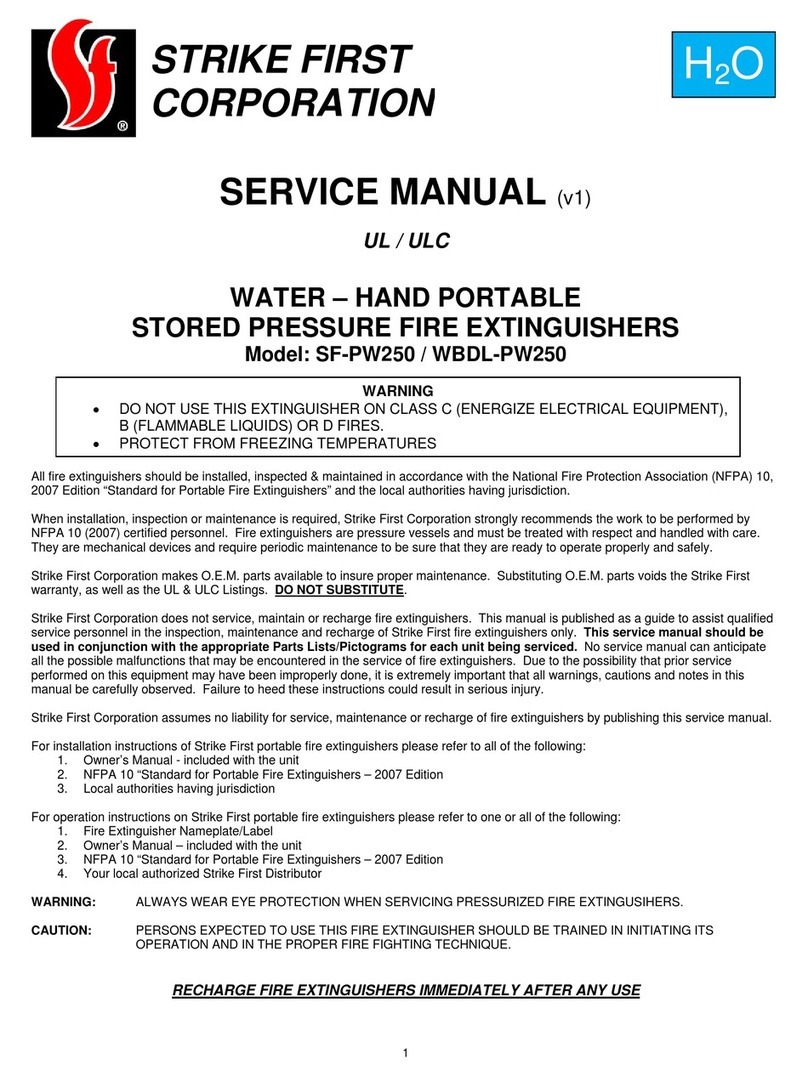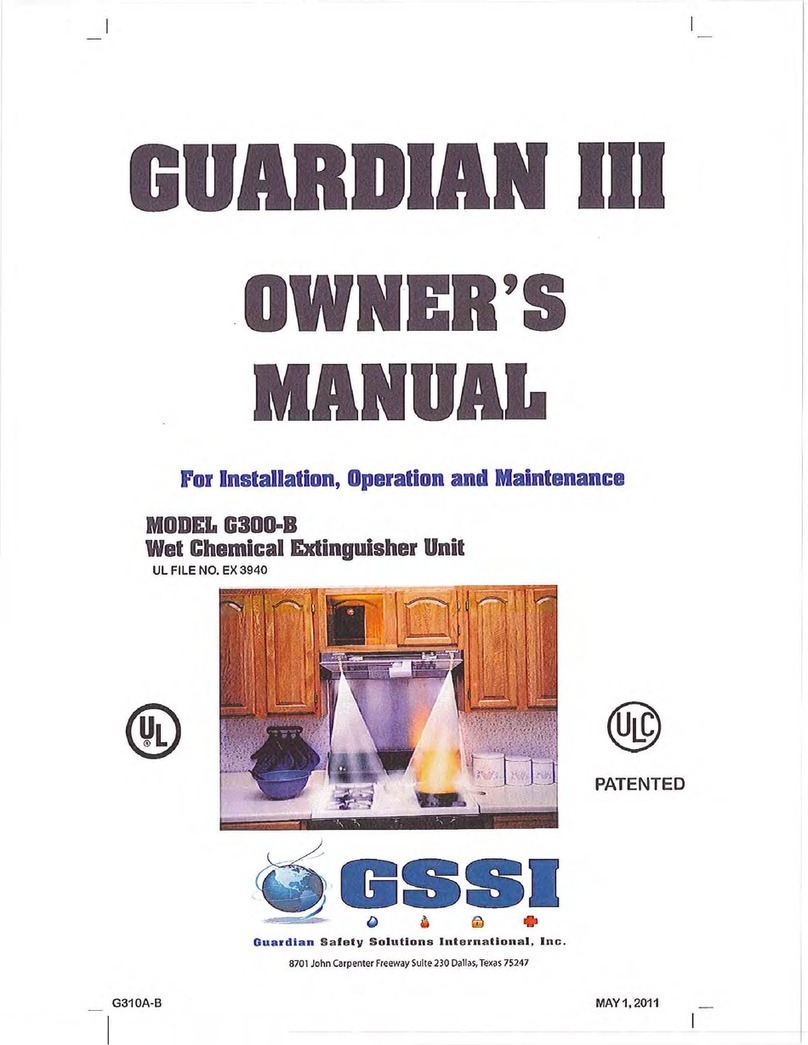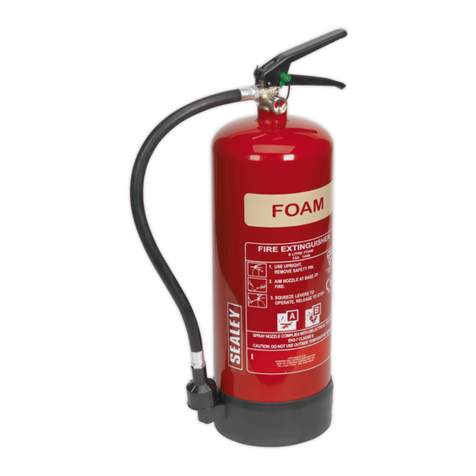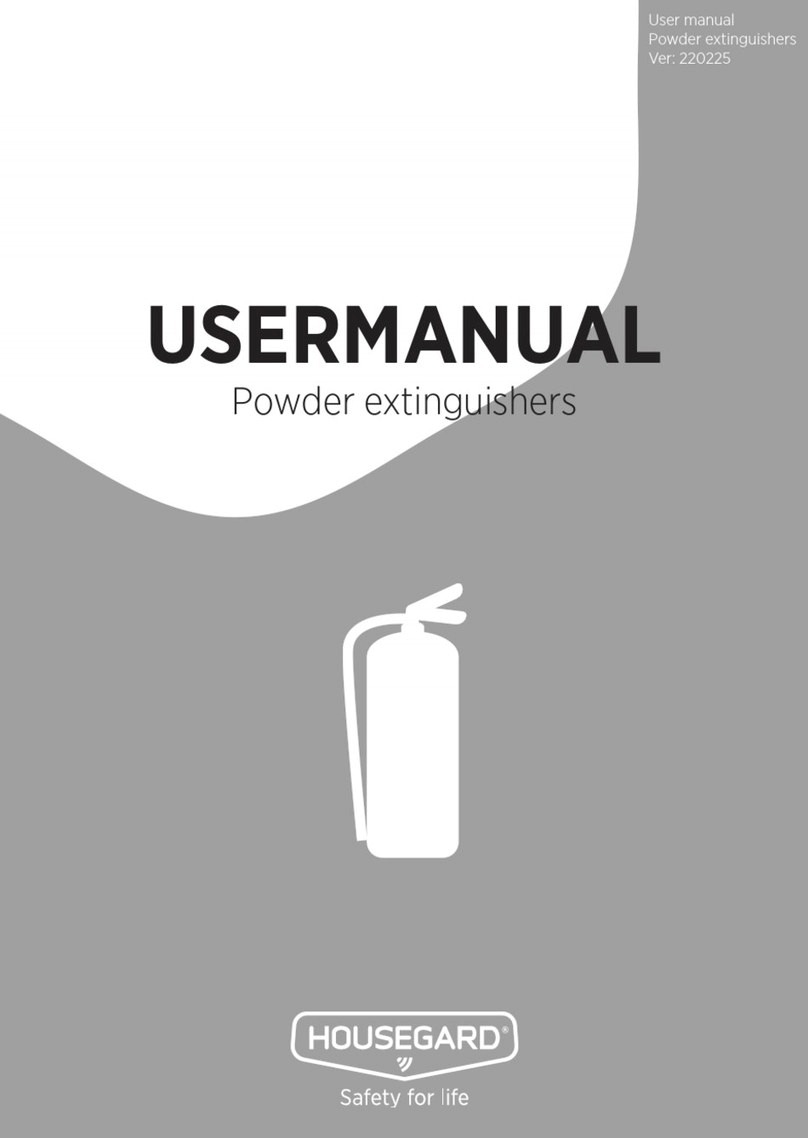
September 200283-KRS100-001 4
KRS-100 Nitrogen Releasing System
but bends ust be ade so that the tubing will not flatten
or kink. A single coil of tubing approxi ately 2-1/2 inches in
dia eter is desirable at each flare or co pression fitting.
The coil ay be neatly ade by wrapping the tubing around
any convenient cylindrical object of that dia eter.
When sliding the tubing through conduit the leading end of
the tube should first be cri ped and bent double so as to
provide a s ooth sliding surface and to prevent possible
foreign atter in the conduit fro entering the tubing. All
tubing fittings with pipe threads, as at the KRS-100 actua-
tor valve body, the pressure-operated actuator and other
accessory devices, shall be asse bled with Teflon tape
wrapped around the ale pipe threads.
All tubing should be blown out with air or nitrogen prior to
aking final connections. Table 1 su arizes the length
of tubing allowed per each KRS-100 cylinder.
3-1.4 Co trol Head Mou ti g
(To Actuator Valve Assembly)
Note: The syste control head ust be ounted to the
KRS-100 actuator valve body using the ounting kit
(P/N 06-129706-001) supplied with the Actuator Valve
Asse bly (P/N 83-100010-001).
This kit contains a rubber gasket that ust be placed be-
tween the ating surfaces of the actuator body and the
control head housing. This kit also contains Teflon coated
bolts and nylon washers for fastening the actuator valve
asse bly to the control head housing.
Prior to ounting a control head on the KRS-100 actuator
valve asse bly ake certain of the following:
1. The control head is in the SET position. On echani-
cal installations the anual release lever should be
pushed up and the tensioning tool inserted in safety
hole in the housing. On electrical installations ake
certain the solenoid trigger holds the actuating lever.
The actuating ca arrow should be pointed away fro
the ratchet spool, (toward the SET position on face-
plate), and the release plunger should be flush or slightly
retracted within the control head body.
2. Ensure the safety pin is in place on the actuator valve
asse bly. See Figure 2.
3. Do not install the nitrogen cartridge at this ti e.
Note: Control Heads are shipped in the SET position with
cover off for ease of installation. There are
tensioning tools shipped with the echanical and
tande control heads to enable proper tension
setting on the cable. A tensioning tool ay be used
with the pneu atic control heads. There is no
tensioning tool per itted with the electrical control
heads. The plunger of the electric solenoid holds
the control head echanis in proper position for
the SET position.
4-1 SYSTEM CHECK-OUT
To de onstrate proper operation of the actuating syste
the following check-out is to be acco plished prior to i -
stalli g the itroge cyli der (P/N 83-100004-001).
4-1.1 For Co trol Head Operatio
1. Re ove the tensioning tool (when used) fro the safety
hole in the control head. If the syste is properly in-
stalled, the head should re ain in the SET position,
fully prepared for either auto atic or anual opera-
tion.
2. Re ove safety pin fro actuator valve asse bly.
3. All cables, with the exception of re ote pull cables,
should be in a taut condition if properly installed.
4. For fusible link check-out, cut the S hook farthest fro
the control head (ter inal link). The released tension
should per it the control head to operate, triggering
the releasing echanis .
5. Check to see that the actuating ca is in the operated
position and that the actuating ca (shaft arrow) has
rotated to the released position. All cables should be
slack, including re ote cable.
6. To check out electrical control heads, do the following:
Ensure that the actuating ca (shaft arrow) is turned
to the SET position. Energize the control head by ap-
plying heat directly to the ther ostats or operating the
panel.
7. Check that the control head triggering echanis has
released. Check that the actuating ca arrow has ro-
tated to the release position.
8. Check to see that the gas valve and/or electric shut-off
have operated. Slack in the cable is an indication, but
only the shut-off of gas and/or shut-off of electric cur-
rent to the hazard de onstrates that these units have
properly functioned.
9. Inspect all other aspects of syste operation, such as
da pers and door holders to see that the syste has
been installed properly.
10. After resetting the syste as outlined below, repeat
check-out by operating local and re ote anual con-
trols to assure their operation.
5-1 READYING THE SYSTEM
If all conditions have proven to be operational, place sys-
te in operation as follows:
1. If the fusible link syste is used, install a new S hook
in the detection line. If the electric syste is used, re-
place ents should not be required.
2. Reset the control head.
3. Re ove the control head tensioning tool when done,
and discard. Electric control heads do ot use
tensioning tools.
